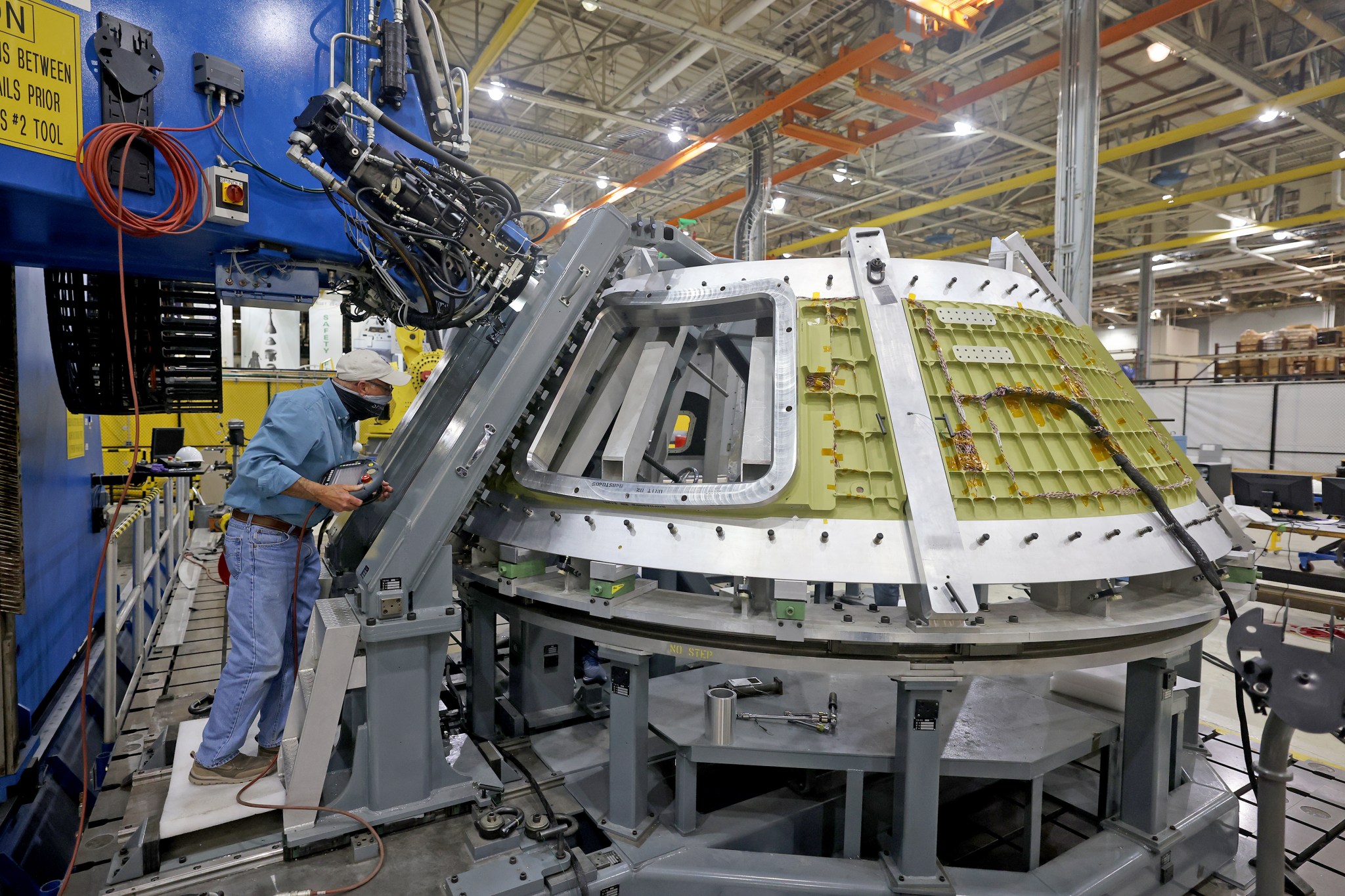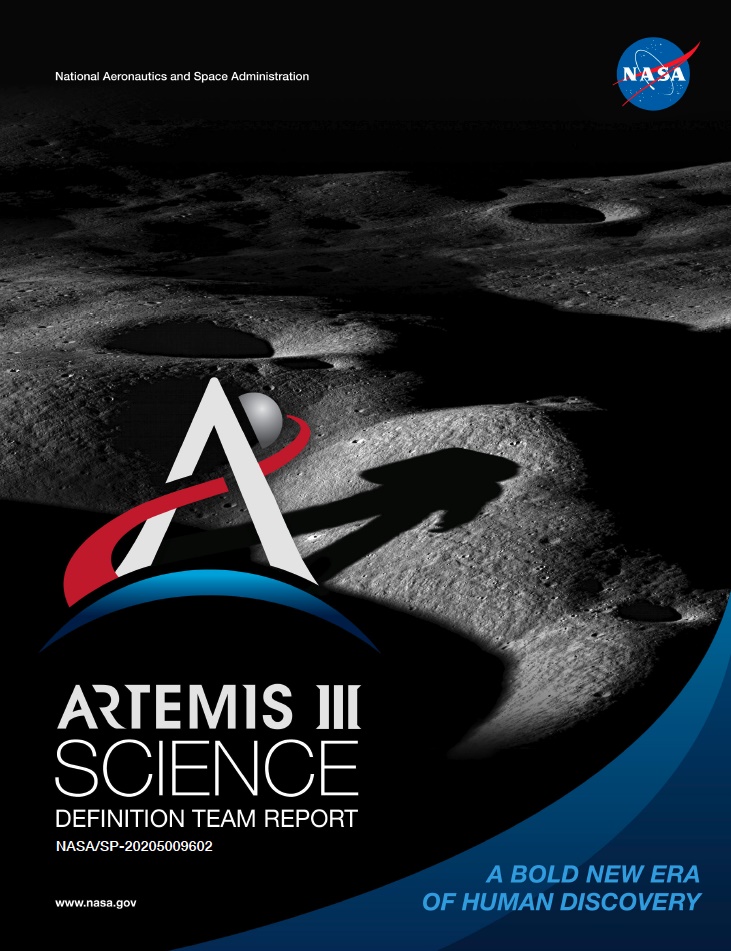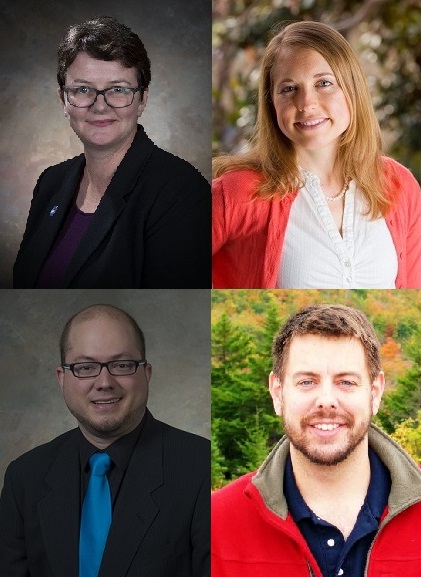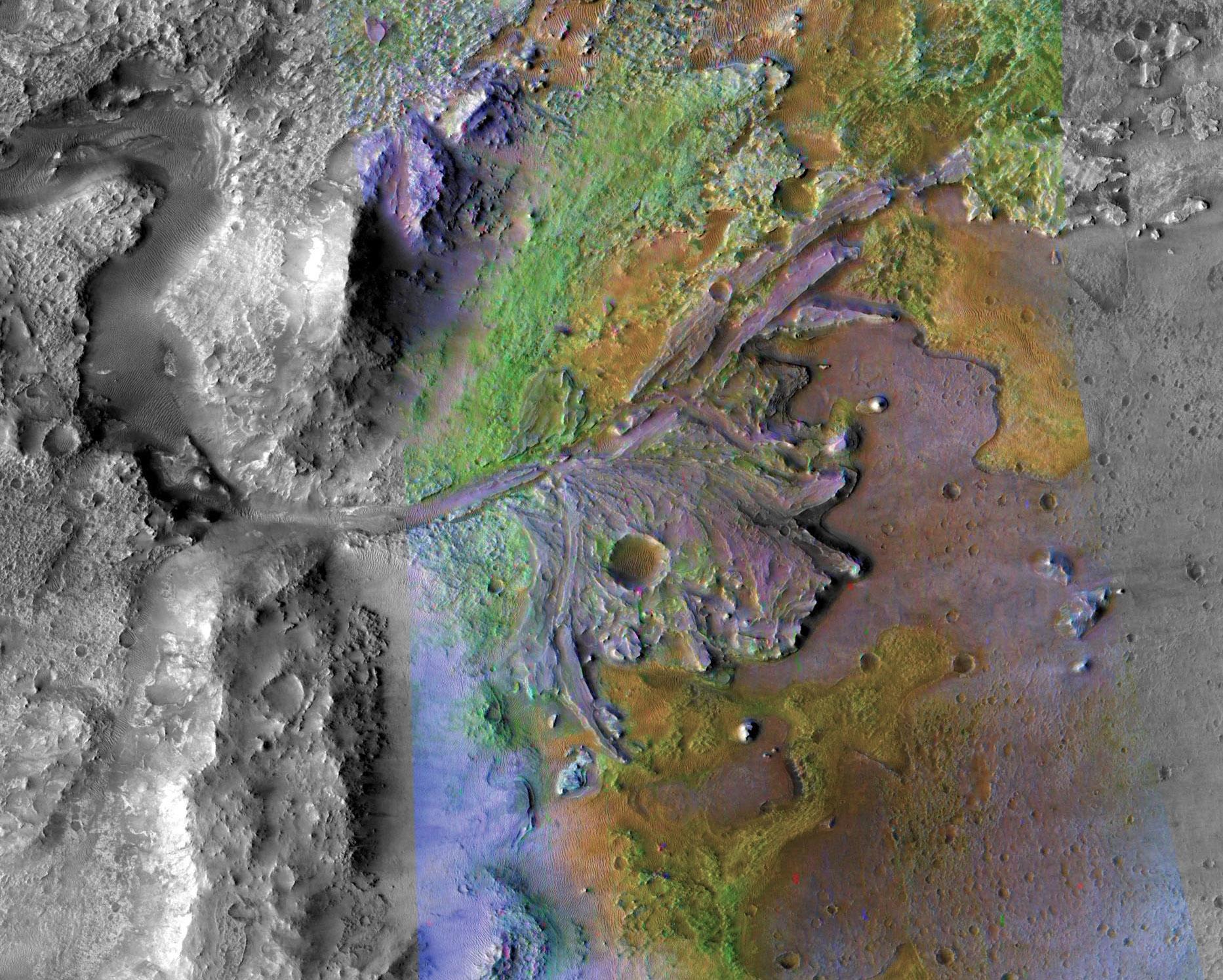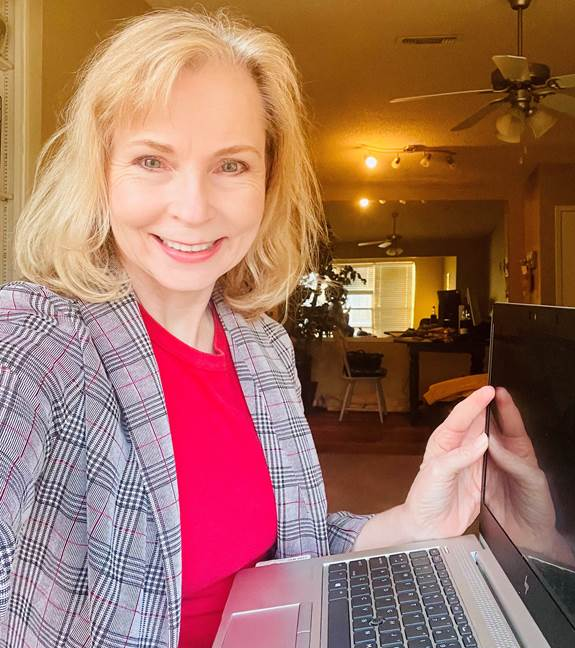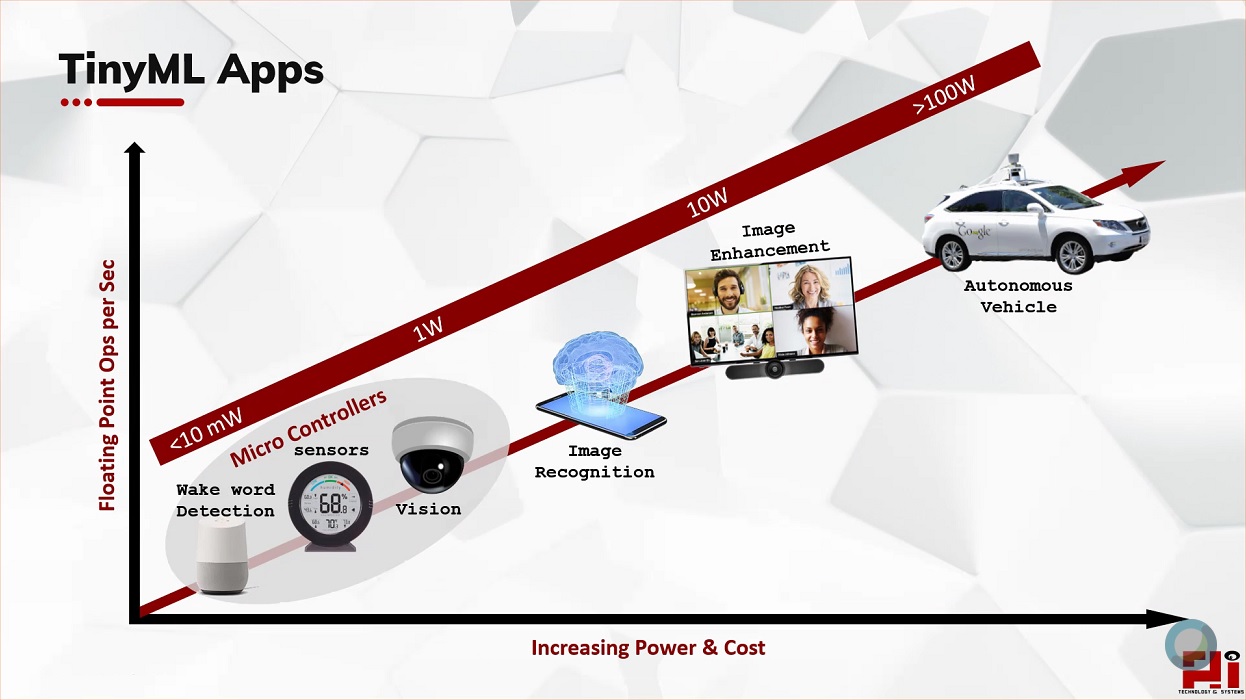In This Week’s Star
- NASA Announces Plans for Second Green Run Hot Fire
- Welding Underway on Orion for First Artemis Mission Landing Astronauts on Moon
- NASA Conducts First Hot Fire of New RS-25 Engine Test Series
- Marshall Director Jody Singer, Past Directors Celebrate Local Award Recognition
- Other Worlds Await: Marshall Planetary Scientists Steer NASA’s Exploration Mission
- Take 5 with Susan Whitfield
- Larry Leopard Designated Marshall’s Competition Advocate, Procurement Ombudsman
- NASA Names Leaders to Key Agency Roles
- Marshall, NASA Leaders Honor Fallen Heroes in Day of Remembrance Video
- First 2021 Tech Talk Features AITS Co-Founder, CEO Rohit Sharma
- OSIRIS-REx to Bid Farewell to Asteroid Bennu, Highlighted on ‘This Week @NASA’
- This Week in NASA History: 50th Anniversary of Launch of Apollo 14 – Jan. 31, 1971
NASA Announces Plans for Second Green Run Hot Fire
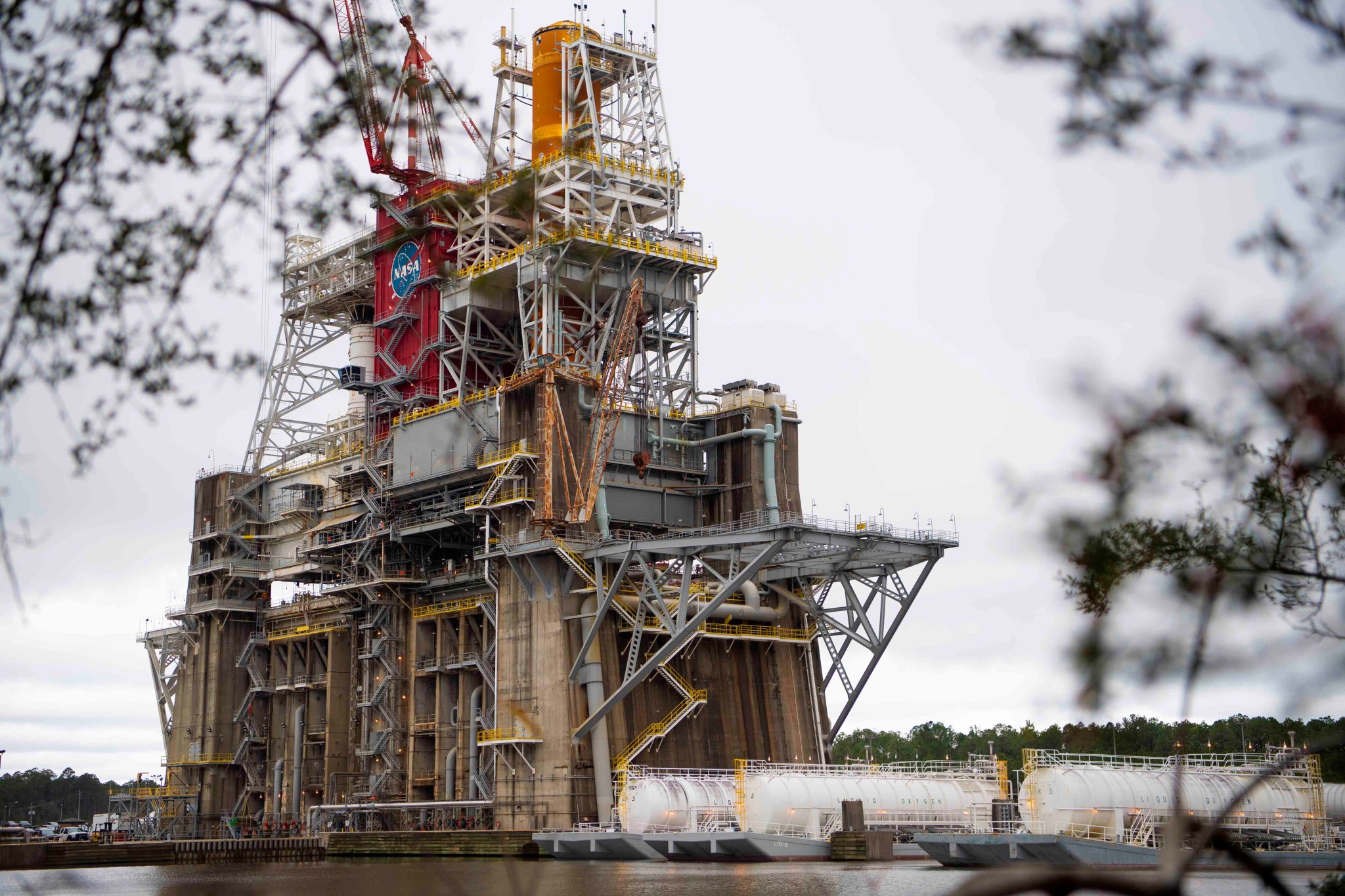
NASA is targeting the week of Feb. 21 for a second Green Run hot fire test for the core stage of its Space Launch System rocket in the B-2 Test Stand at the agency’s Stennis Space Center. The Green Run test series is a comprehensive assessment of the rocket’s core stage prior to launching the agency’s Artemis missions. While the first hot fire test marked a major milestone for the program with the firing of all four RS-25 engines together for the first time, the hot fire ended earlier than planned. NASA and Boeing, the core stage lead contractor, determined a second, longer hot fire test should be conducted to provide additional data to help certify the core stage for flight. Recent inspections show the core stage hardware, including its four RS-25 engines, and the B-2 Test Stand are in excellent condition after the first hot fire test. No major repairs are needed to prepare for the second hot fire test. The date for the second Green Run hot fire will be set following the test readiness review. For the latest on Green Run, visit the Artemis blog.
Welding Underway on Orion for First Artemis Mission Landing Astronauts on Moon
At NASA’s Michoud Assembly Facility, technicians from Orion prime contractor Lockheed Martin have welded together three cone-shaped panels on Orion’s crew module for the Artemis III mission that will land the first woman and next man on the Moon.
The crew module’s primary structure, the pressure vessel, is comprised of seven machined aluminum alloy pieces that are welded together through a weld process that produces a strong, air-tight habitable space for astronauts during the mission. The pressure vessel is designed to withstand the harsh and demanding environment of deep space, and is the core structure upon which all the other elements of Orion’s crew module are integrated.
With welding complete on the crew module cone panels – one of which contains windows providing astronauts views of the Moon and Earth – work will begin joining the forward bulkhead to the tunnel to create the top of the spacecraft, followed by the barrel and aft bulkhead join to form the bottom of Orion.
Last, the forward bulkhead will be welded to the top of the panels and, for the seventh and closeout weld, the bottom of the cone panels will be joined to the barrel to complete the pressure vessel. Once welding of the Artemis III crew module primary structure is complete, it will be shipped to NASA’s Kennedy Space Center where it will undergo further assembly beginning this fall.
Orion, the Space Launch System, and Exploration Ground Systems programs are foundational elements of the Artemis program. Artemis I will be the first integrated flight test of Orion and SLS and is targeted to launch later this year. Artemis II will follow and is the first crewed mission, taking humans farther into space than ever before.
NASA Conducts First Hot Fire of New RS-25 Engine Test Series
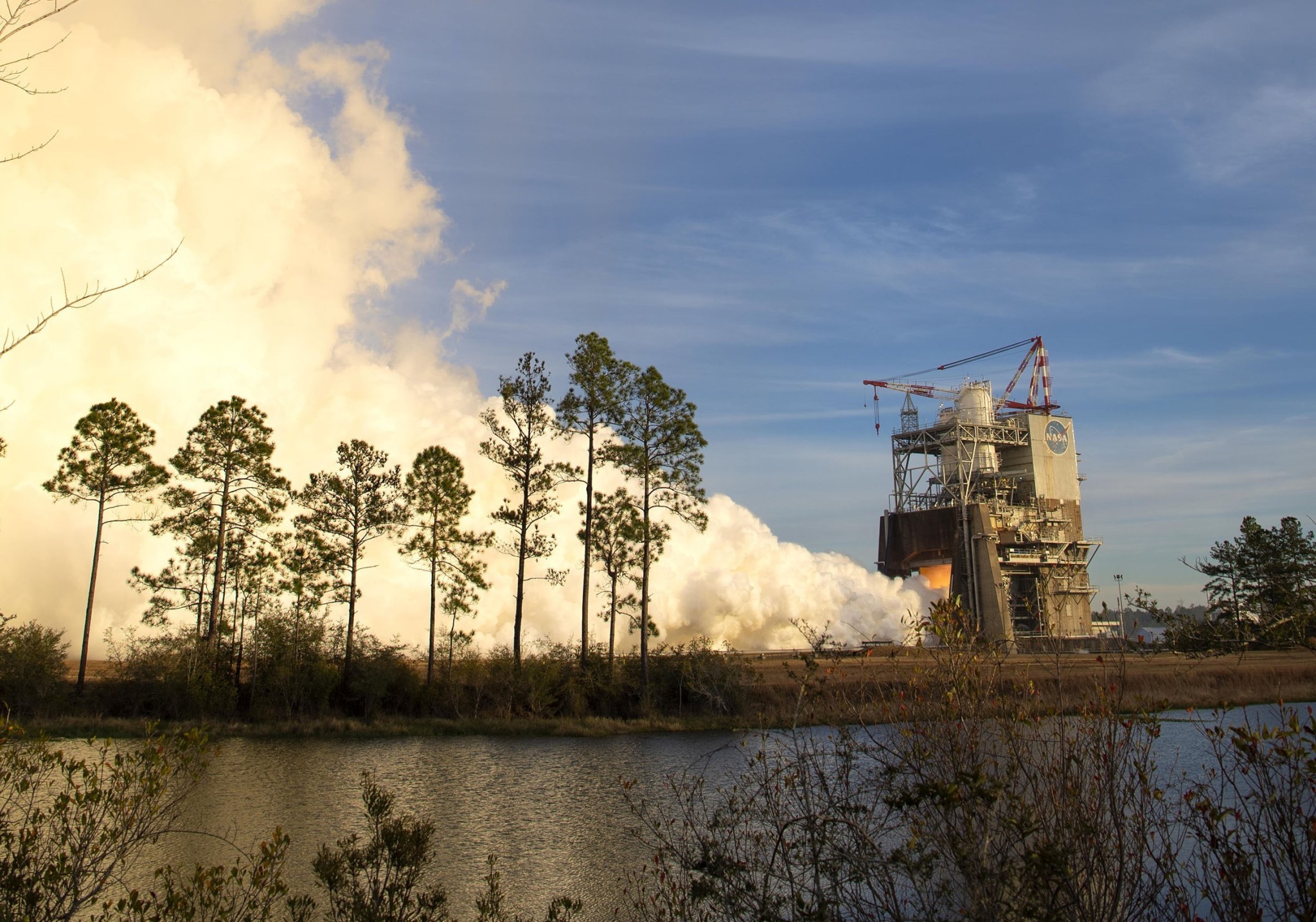
NASA conducts the first hot fire test in a new RS-25 engine test series for the production of engines that will power future flights of NASA’s Space Launch System rocket. The RS-25 development engine – No. 0528 – was tested on the A-1 Test Stand at NASA’s Stennis Space Center on Jan. 28. The first four SLS flights will use upgraded RS-25 space shuttle main engines that have already completed certification testing. The Jan. 28 engine test marked the A-1 Test Stand’s first since April 2019 when NASA concluded RS-25 engine testing for the first four SLS flights. The new RS-25 engine test series will evaluate the performance of engine components made with cutting-edge manufacturing technologies and techniques to enhance production of new RS-25 engines for future SLS flights. The RS-25 development engine No. 0528 fired for a full duration of about 8 1/2 minutes, or 500 seconds, which is the same amount of time the RS-25 engines fire on SLS during launch and flight. The engine was fired at 111% of its original space shuttle main engine design power and the same power level needed to help launch SLS on its missions. Testing of the RS-25 engines is a collaborative effort between NASA and Aerojet Rocketdyne, the RS-25 engine prime contractor. (NASA)
Marshall Director Jody Singer, Past Directors Celebrate Local Award Recognition
By Taylor Goodwin
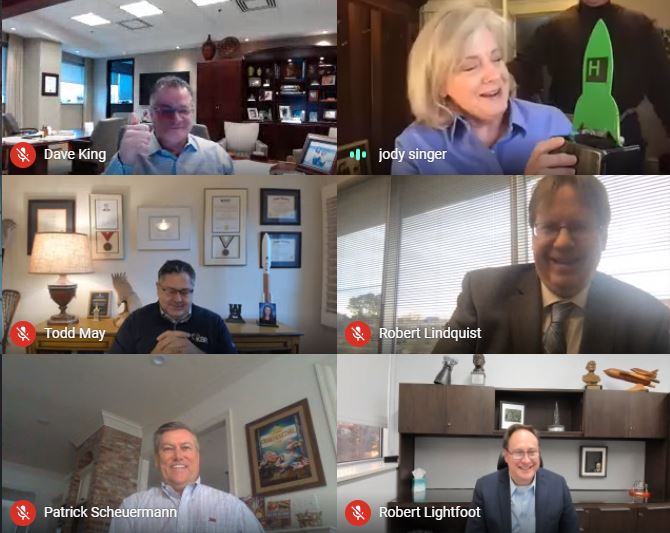
Jody Singer, director of NASA’s Marshall Space Flight Center, joined four past Marshall directors for a keynote panel discussion as part of Downtown Huntsville Inc.’s annual meeting and awards ceremony, held virtually Jan. 22. The event was presented in partnership with the University of Alabama in Huntsville with support from Google Fiber.
Singer, Marshall’s director since September 2018, joined Dave King (2003-09), Robert Lightfoot (2009-12), and Patrick Scheuermann (2012-15) as panelists, while Todd May (2016-18) served as moderator.
“I was a big fan of DC Comics as a kid,” May said. “I remember reading about the Justice League getting together – they’d all go back to the lair and figure things out. I feel like we’re back at the lair today with this crew, and I’m excited that we’re all still associated with Huntsville in some way.”
Singer gave an update on Marshall’s 2020 events and milestones. “We support science, technology, human exploration, and we have roles in the agency – such as IT – that have become critical in mandatory telework,” she said. “It’s hard to not be proud of what we’re doing and how we’re accomplishing things despite the pandemic. Our team is delivering, and we’d like to thank you and the community for all of the support.”
When asked to describe their favorite space event as director, all recalled their first launch experience from the control room.
“I got to sit in the control room during the launches,” Scheuermann said, “and I didn’t know the tradition – at your first launch someone comes and cuts your tie off, unexpectedly. There was this lady named Jody [Singer] who snuck in somehow and cut one of my favorite ties.”
Singer, the center’s first female director, reflected on her career’s impact on girls and women. “Being the 14th center director that also happens to be female is a dream,” she said. “Despite the challenges we’ve had to face in 2020, my job was the same as yours – to deliver on the mission and develop the people. There are a lot of shoulders that I stand on, and I think it’s my job to pay it forward. One of the things I’m passionate about is making people see that they have a path to opportunity.”
Each former director described the legacy they are most proud of during their tenure.
“I took the job three or four months after the Columbia accident happened,” King said. “Dealing with that emotionally and building the confidence back to make the decisions we had to make was one of the hardest things of my career. It was a very difficult time; but when you see liftoff on Return to Flight, you see landing, and the crew gets off feeling good – there’s nothing like it. It’s kind of like the agony of defeat and then the thrill of victory after.”
Lightfoot reflected on the agony of defeat with the cancellation of the Constellation program and the thrill of victory when the agency started the Space Launch System program. “That wasn’t just us at Marshall,” he said. “It was the entire community of Huntsville.”
Scheuermann said that he picked up his term where Lightfoot left off. “When I came in, SLS was just beginning,” he said. “Really the only people that they could see who could stand in their way of success was themselves in the mirror when they went to work every day.”
Singer explained each former director’s influence on her career. “Everything you all did made a difference in helping me develop my own special sauce,” she said. “You taught me your secrets, promoted me, and served as my sponsors, mentors, and friends. I think that leads to success – when you can recognize yourself and be comfortable in your own skin. Make sure that you go home and encourage those you love that they can go out and achieve their dreams, because it’s all possible.”
Following the panel, Downtown Huntsville Inc. honored Marshall with its Downtown Advocacy Award. The award has previously been given to an individual to recognize exceptional partnership with the Huntsville community. However, for the first time, Marshall earned the award as an organization honoring NASA’s partnership with Downtown Huntsville. Recognizing that achievement, Singer highlighted the importance of teamwork in Huntsville’s current and future workforce.
“Huntsville is the future of our workforce,” Singer said. “The ability to attract and retain those bright folks and keep the community vibrant is what you do, so thank you.”
The full program can be viewed here.
Goodwin, a Media Fusion employee, supports Marshall’s Office of Strategic Analysis & Communications.
Other Worlds Await: Marshall Planetary Scientists Steer NASA’s Exploration Mission
By Rick Smith
Editor’s note: This is Part 2 in a series showcasing science wins at NASA’s Marshall Space Flight Center in 2020 – and highlighting Marshall research across the unique science disciplines that drive NASA’s mission in 2021 and beyond.
It’s the job of NASA’s Planetary Science division to study Earth’s neighboring worlds in search of answers to fundamental cosmic questions: how celestial bodies form, evolve, and interrelate – and whether they’re capable of supporting life, now or in the past.
The work involves observing, mapping, and exploring the surfaces and interiors of planets and moons, using satellites, sophisticated instrument packages, and probes. In coming years, as the Artemis program returns human explorers to the Moon and paves the way for crewed missions to Mars, it also will be done by human hands.
That gives Renee Weber, Marshall’s chief scientist, a shiver of excitement. “Every night, you can walk outside and look up at the Moon,” she said. “The idea of humans walking on its surface again – reinvigorating human exploration, making discoveries that could change science as we know it – is thrilling.”
Weber’s not just dreaming about going back; she’s helping to make it happen. Last September, she co-chaired a NASA science definition team to identify science objectives for Artemis III. The first crewed mission back to the Moon since the Apollo era, Artemis III sets the stage for a long-term human outpost at the lunar South Pole, where NASA hopes to establish its proposed Artemis Base Camp by the end of the decade.
Sponsored by NASA’s Science Mission Directorate, the definition team reviewed 124 white papers by NASA researchers, their academic partners, and the broader science community. Their findings reflect the goals of the latest NASA Planetary Decadal Survey and reports by the National Research Council and Lunar Exploration Analysis Group.
Weber and fellow Marshall planetary scientist Heidi Haviland also contributed in 2020 to the ongoing work of NASA’s InSight mission, launched to Mars in 2018 to conduct seismic studies of the Red Planet. The mission recently was extended to December 2022. Led for NASA by the Jet Propulsion Laboratory, InSight is part of NASA’s Discovery Program, which is managed by Marshall.
NASA’s Commercial Lunar Payload Services initiative – partnerships with American companies to deliver science and technology to the lunar surface – will begin flights to the Moon later this year. Haviland is the project scientist for the Neutron Measurements at the Lunar Surface project, set to be delivered to the Moon later this year as part of Astrobotic Mission One, the first of two inaugural commercial lunar payload flights. Her Marshall colleague, physicist Peter Bertone, is the project’s principal investigator.
Based on an instrument now in use on the International Space Station, the project will use a high-resolution neutron spectrometer to study neutron radiation on the Moon, generated by the impact of cosmic energy colliding with the lunar regolith. As it documents the energy and behavior of those neutrons, researchers can use the data to assess lunar surface composition, accurately detecting pockets of iron, titanium, and even water.
In 2020, the project team completed preliminary and critical design reviews. They worked closely with Astrobotic Technology to develop flight software, deliver control documentation, and complete thermal vacuum testing on-site at Marshall. The instrument will be delivered to Astrobotic’s Pittsburgh facilities in March for integration with the company’s Peregrine lander. It then will go to NASA’s Kennedy Space Center for final prelaunch checkout prior to flight aboard a United Launch Alliance Vulcan Centaur rocket.
A second commercial services payload, the Lunar Node 1 Navigation Demonstrator, also is being readied for flight. Marshall navigation engineer Evan Anzalone leads that project, which will test a navigational beacon to aid geolocation for lunar-orbiting spacecraft and landers.
Also Moon-bound in coming years is an innovative new project led by Marshall planetary scientist Michael Zanetti. The Kinematic Navigational and Cartography Knapsack is a mobile, backpack-mounted lidar scanner – a remote sensing method that uses pulsed laser light to measure range. The device’s sensors measure range and velocity simultaneously for millions of points scanned per second across a field of view, delivering a 3D “point cloud” or map of the surrounding terrain – a superpowered version of laser range finders used by surveyors or next-gen technology that helps smart cars avoid collisions.
“Explorers can deliver an ultra-high-resolution 3D map of the terrain they’re exploring,” Zanetti said. “It also helps ensure their safety in a GPS-denied environment such as the Moon, identifying actual distances to far-off landmarks and showing explorers in real time how far they’ve come and how far is left to go to reach their destination.”
In time, the mobile backpack could be mounted on far-ranging lunar rovers, or with its innovative velocity-sensing capabilities could be used to track patterns of micrometeorite bombardment. Zanetti even envisions using it to study Martian dust devils. The year-old project is funded by NASA’s Early Career Initiative.
Marshall planetary scientist Caleb Fassett, who joined Weber as part of the Artemis III science definition team, earned a unique science milestone when NASA launched Mars 2020 last July. Fassett helped determine where on the Red Planet it will land.
Mars 2020, carrying the Perseverance rover, will touch down Feb. 18 in Jezero crater, a 30-mile-diameter site that was once a shallow pond or lake. Using assorted instruments, 23 cameras and a helicopter drone dubbed Ingenuity, Perseverance will chart the area’s topography and geology to prepare for future crewed Mars missions.
“Geologically speaking, Jezero’s habitable environment could be roughly 3 or 4 billion years old,” Fassett said. “We don’t have access to many rocks on Earth from that era. So these studies could be really illuminating about the potential development of life on Mars and other planetary bodies. There’s nothing like a good origin story.”
Rae Ann Meyer, deputy manager of Marshall’s Office of Science & Technology, called science a circular pursuit – science begetting robust exploration work, which in turn begets new science. Marshall’s role in developing and testing the Mars Ascent Vehicle – which will lift off from Jezero to ferry Perseverance’s samples to a European Space Agency spacecraft for return to Earth – adds another layer of scientific discovery.
“Just as state-of-the-art engineering enables new science missions, doing great science brings new opportunities to add to Marshall’s propulsion and engineering legacy,” Meyer said. “We’re leveraging the center’s storied history of launch vehicle development and applying it to do unprecedented new science on the Moon and Mars.”
Smith, a Manufacturing Technical Solutions employee, supports Marshall’s Office of Strategic Analysis & Communications.
Take 5 with Susan Whitfield
Susan Whitfield has come full circle. After completing three rigorous long-distance moves in just over two years, her latest post has her smiling anew – she’s home again.
Whitfield, the new human resources director at NASA’s Marshall Space Flight Center, spent 28 years at Marshall before going to agency Headquarters in 2018 to lead the Human Capital Transformation Project. Afterwards, she served as human resources director at NASA’s Glenn Research Center.
“I’m forever grateful for those opportunities,” said Whitfield, a native of Killen, Alabama. “But to say that I was happy to be home is an understatement. I feel extremely blessed. Relationships honed over a number of years are golden. But there’s a lot of new players, too, and I’m looking forward to meeting and working with them. Marshall just feels like home to me.”
Recently, Whitfield met virtually with Marshall Star editor Daniel Boyette to discuss her journey, ideas, and the conclusion that there’s no place like home.
Question: How do you encourage teamwork, collaboration, and integration in the Office of Human Resources, especially in this unprecedented telework environment?
Whitfield: We do a weekly all-hands with the staff. I think it’s really important that we stay connected. I really encourage people to get on camera. Actually seeing each other and reading facial expressions – whether it’s smiles or frowns – makes a difference in communication. We check in informally, where we don’t discuss any business. Everyone’s home situation is different so it’s important to meet people where they are. For the management team, we do a kick-start every Monday morning where we get together and talk about everyone’s weekend and what actions or challenges we have that week. And we do a wind-down on Thursday afternoons. During this past year the team implemented a “learning circle,” where someone on the staff requests a guest or customer to discuss a topic of interest. The first session was on resilience with the Employee Assistance Program Coordinator Terry Sterry. We’ve taken that one and turned it into a centerwide learning series, “Let’s Talk About Wellbeing.”
Question: How are you managing your and your team’s work-life balance, especially now, almost a year into the pandemic?
Whitfield: I think modeling the right behavior is key. It’s not just talking the talk, it’s walking that talk, and recognizing that some people are really struggling. There are people who have children and they’ve had to turn into teachers or they’re caring for parents. It’s very difficult and I think our risk of burnout is high, so it’s important to weave that recognition into every conversation we have. It’s not just, “We need to talk about that because we have to check that box” – it’s living it and incorporating it, checking on people if they’re not feeling well, reaching out if someone seems disengaged, and seeing what we can do to support each other.
Question: How does your office honor and demonstrate NASA’s commitment to creating a diverse and inclusive environment where team members are valued for their unique contributions?
Whitfield: It’s important to be aware that we all have unconscious biases. Admitting that and building awareness is really the first step. We can educate employees, but it has to go beyond training. I think the open dialogues that we had over the summer when our nation was dealing with acute civil unrest was vital. It builds something between people when you can talk honestly and openly about things that you might not understand, when we share experiences and see someone else’s perspective. I think oftentimes we’re afraid because we think we might say the wrong thing. We have to open up and be willing to communicate and to assume positive intent. As leaders, modeling those behaviors and creating a space where employees feel they can have honest conversations is so important. I love that NASA has incorporated Inclusion as a core value. Inclusion and diversity go hand in hand – whether it is diversity in race, ethnicity, gender, age, experience – our differences truly make us stronger. One of my colleagues shared a quote that struck a chord with me; it’s from diversity advocate Verna Myers: “Diversity is being asked to the party; inclusion is being asked to dance.”
Question: What key partnerships is your team pursuing to help NASA develop a sustainable presence on the Moon and help push the boundaries of science, technology, and human exploration?
Whitfield: Since we are the ‘people people,” our partnerships span across a broad range – internal and external to the agency. Among our critical partners are hiring managers, the Office of Diversity and Equal Opportunity, the Office of the General Counsel , and the Office of STEM Engagement – working collaboratively with these offices is imperative. The Office of the Chief Human Capital Officer has done a really good job working with the Office of Personnel Management in pushing the boundaries on some of the hiring flexibilities that NASA has been able to secure. That gives us the ability to hire the talent that NASA needs for its missions. The workforce of today is a lot different than it was 20 years ago. Often, people aren’t looking to work at one place their entire career. They’re looking for hands-on work and engaging work – and just the chance to work at NASA. Our brand is still very strong, but if we want to remain competitive in today’s market, we have to lean forward on what the workforce of tomorrow will look like.
Question: How does your office define and achieve mission success?
Whitfield: Our customers decide whether we are successful – we listen and adjust. Human capital has been on a transformation journey for the last few years – and that continues. Originally when we moved to an enterprise human capital model, the Office of the Chief Human Capital Officer vision statement was, “Mission first, people always.” After Jane Datta took over as the chief human capital officer, we realized what our mission statement really is, “People first, mission always.” That is how all of us can best achieve mission success – knowing that NASA’s people are our greatest asset.
Previous Take 5s
Jason Detko, director of Marshall’s Office of Procurement
Rae Ann Meyer, acting manager of Marshall’s Science and Technology Office
Loucious Hires, director of Marshall’s Office of Diversity and Equal Opportunity.
Deborah Crane, Commercial Crew Program launch vehicle chief engineer
Angie Jackman, project manager for the Mars Ascent Vehicle
Larry Leopard Designated Marshall’s Competition Advocate, Procurement Ombudsman
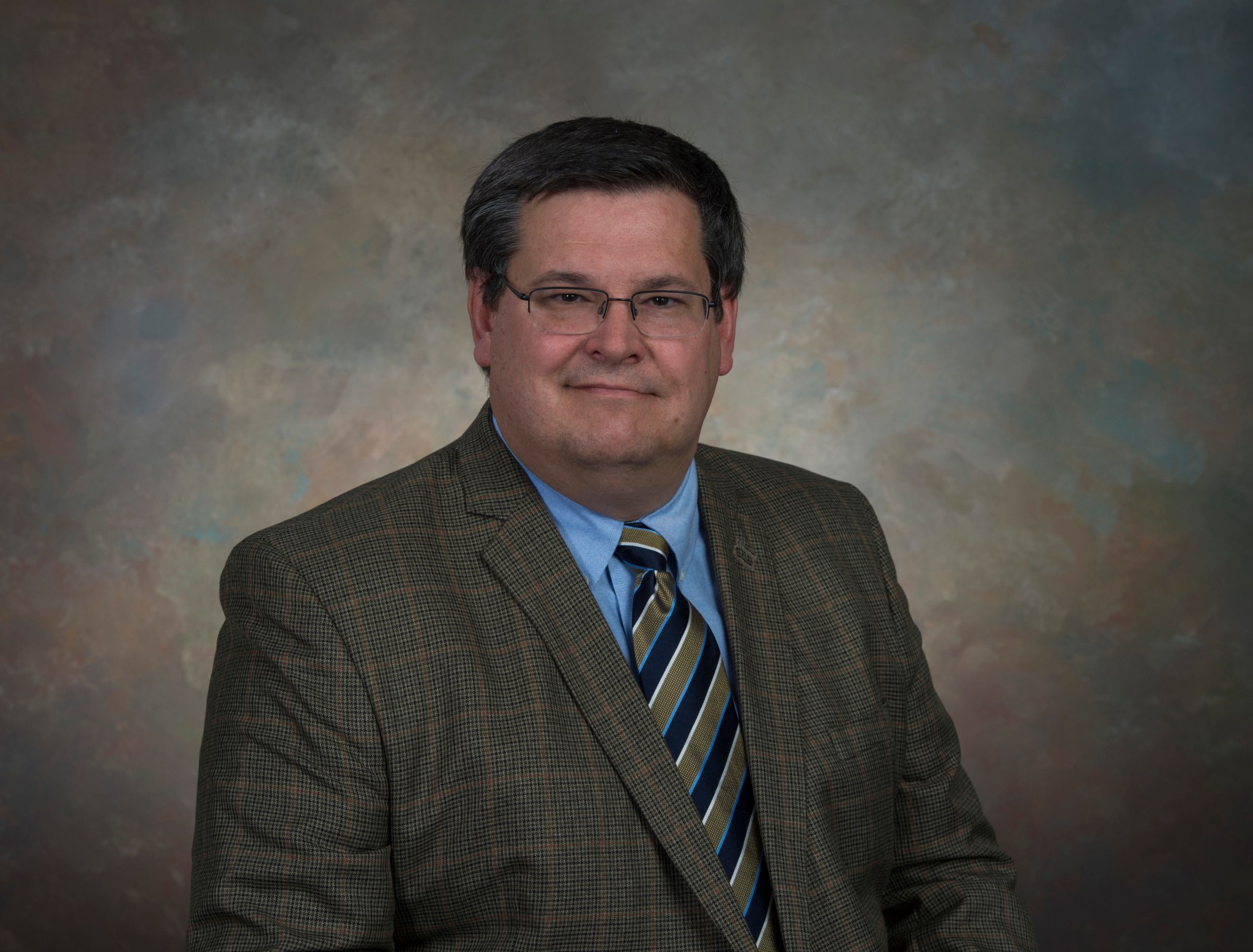
Larry Leopard, associate director, technical, at NASA’s Marshall Space Flight Center, has been designated the center’s competition advocate and procurement ombudsman. Advocates for competition are responsible for promoting the acquisition of commercial items, promoting full and open competition, challenging requirements that are not stated in terms of functions to be performed, performance required or essential physical characteristics, and challenging barriers to the acquisition of commercial items and full and open competition. Marshall’s procurement ombudsmen serves as an agency representative to enable a more open acquisition process by facilitating communications on an informal basis between NASA and interested parties outside the government – such as offerors, potential offerors, contractors, and industry representatives – in the resolution of matters arising during the pre-award and post-award phases of a procurement. (NASA)
NASA Names Leaders to Key Agency Roles
NASA has named four appointees to senior agency positions – Bhavya Lal, acting chief of staff; Phillip Thompson, White House liaison; Alicia Brown; associate administrator for the Office of Legislative and Intergovernmental Affairs; and Marc Etkind, associate administrator for the agency’s Office of Communications.
In addition, Jackie McGuinness will join the agency as press secretary and Reagan Hunter will be special assistant for the agency’s Office of Legislative and Intergovernmental Affairs.

Lal brings extensive experience in engineering and space technology, having been a member of the research staff at the Institute for Defense Analyses Science and Technology Policy Institute from 2005 to 2020. There, she led analysis of space technology, strategy, and policy for the White House Office of Science and Technology Policy and National Space Council, as well as federal space-oriented organizations, including NASA, the Department of Defense, and the intelligence community.
Lal is an active member of the space technology and policy community, having chaired, co-chaired, or been on five high-impact National Academy of Science committees. She spent two consecutive terms on the National Oceanic and Atmospheric Administration Federal Advisory Committee on Commercial Remote Sensing and was an External Council member of NASA’s Innovative Advanced Concepts Program and the Technology, Innovation and Engineering Advisory Committee of the NASA Advisory Council. Before joining the Science and Technology Policy Institute, Lal was president of C-STPS LLC, a science and technology policy research and consulting firm. Prior to that, she was the director of the Center for Science and Technology Policy Studies at Abt Associates, a global policy research consultancy based in Cambridge, Massachusetts.
Lal will also be the senior advisor for budget and finance at NASA. Read her full bio.
Thompson comes to NASA after serving as the coalitions advisor to the coordinated campaign to help elect Sen. Jon Ossoff and Sen. Rafael Warnock in the Senate runoff elections in Georgia. In the general election, Thompson was Georgia coalitions director for President Joe Biden, where he led a team to help engage one of the most diverse electorates in history. Read his bio.
Brown joins NASA with extensive experience in government and government relations. Brown will direct a staff responsible for managing correspondence and requests for information received from Congress and handling requests for legislative material, as well as be a senior advisor to agency leaders on legislative matters.
Prior to joining NASA, from 2015 to January 2021, Brown was a professional staff member for the Senate Committee on Commerce, Science, and Transportation, including the Subcommittee on Aviation and Space, and the Subcommittee on Science, Oceans, Fisheries, and Weather. In this role, she helped develop space legislation and performed oversight on policy and programs for multiple agencies, including NASA. Prior to that, she was government relations manager for Harris Corporation. Read her full bio.
Etkind joins NASA with more than two decades of experience in development, production, content strategy, and management for science-based programming organizations. Etkind directs internal and external communications for NASA and is a senior advisor to agency leaders. He is responsible for managing an agencywide staff of more than 200 that implements all aspects of NASA’s external and internal communications.
Previously, Etkind was general manager for the Science Channel, part of Discovery Inc., a position he began in 2015. In that capacity, he was responsible for all aspects of development, production, brand strategy, and day-to-day operations for the network. Etkind brought back to the network the robot competition “BattleBots,” launched STEM-focused “MythBusters Jr.,” initiated the network’s live coverage of the Great American Eclipse and NASA’s SpaceX Crew-1 Mission to the International Space Station, and commissioned award-winning specials, including “Cassini’s Grand Finale” and “History of Pluto.” Read his full bio.
McGuiness was most recently communications director for Rep. Terri Sewell of Alabama, where she worked on a host of issues, including the congresswoman’s work on the House Permanent Select Committee on Intelligence. Previously, she was Florida press secretary on President Biden’s presidential campaign and press secretary for former U.S. Sen. Bill Nelson, the former ranking member of the Senate Commerce, Science, and Transportation Committee with oversight over NASA. Read her full bio.
Hunter joins NASA after working at the agency’s Johnson Space Center from 2012 to 2019. Providing support to the associate administrator for Office of Legislative and Intergovernmental Affairs, Hunter maintains relationships between NASA and Congress and promotes agency programs, initiatives, and goals. While at Johnson, Hunter worked in the Office of the Chief Financial Officer as a program analyst primarily supporting the center’s Engineering Directorate. Read his bio.
Marshall, NASA Leaders Honor Fallen Heroes in Day of Remembrance Video
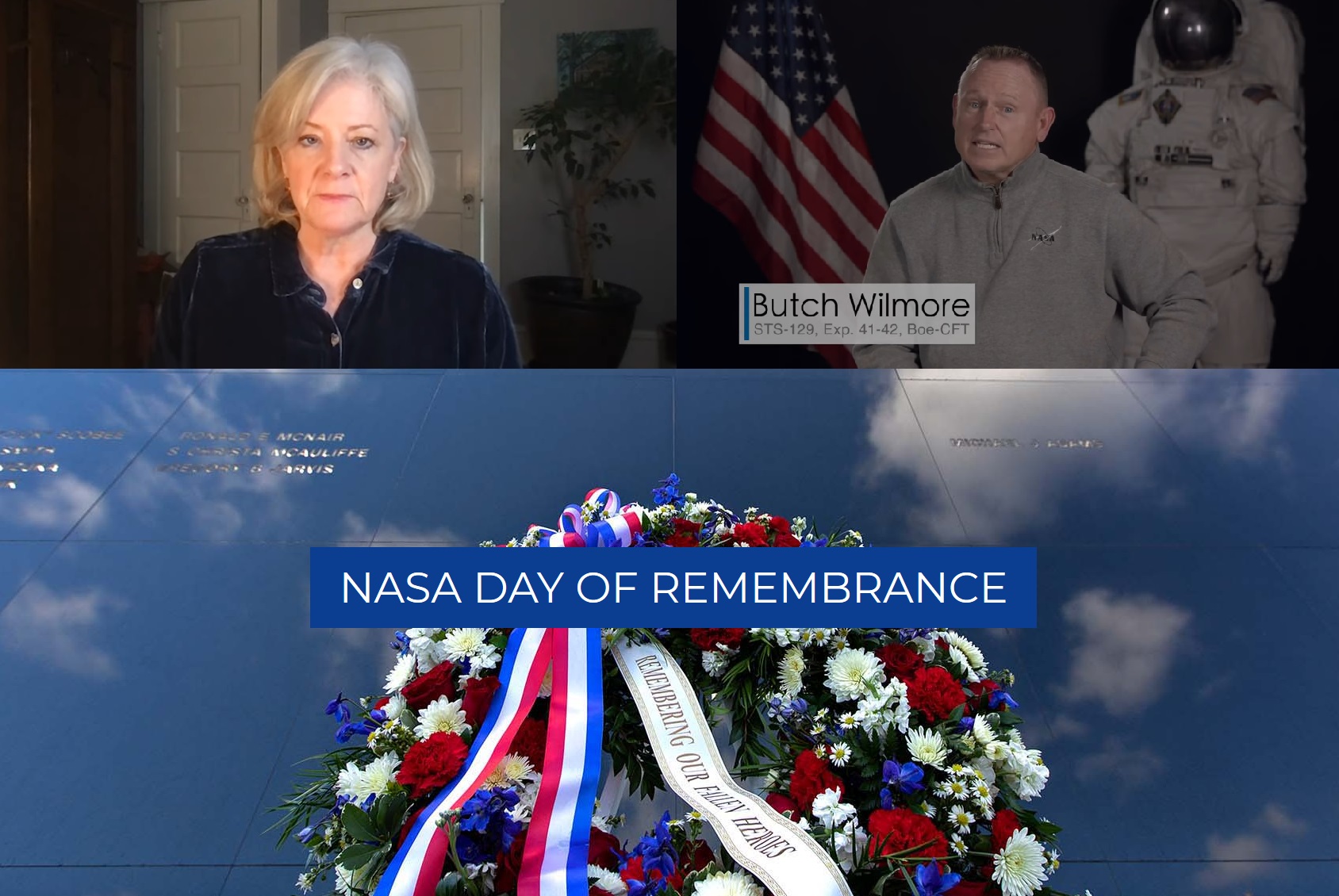
Jody Singer, director of NASA’s Marshall Space Flight Center, leads a Day of Remembrance virtual observance Jan. 28, commemorating the explorers who gave their lives in pursuit of America’s space program. “They were our NASA family … woven into our hearts, solemn reminders of what is at stake,” Singer said. “They are why we’re committed to vigilance and safety.” Singer was joined in the video by veteran NASA astronaut Butch Wilmore, who will command the first flight of the Boeing Starliner in fall 2021, and Bill Hill, director of Marshall’s Safety and Mission Assurance Directorate. NASA’s Day of Remembrance annually honors its fallen heroes — among them the crews of Apollo 1, lost on Jan. 27, 1967, and space shuttles Challenger STS-51L and Columbia STS-107 on Jan. 28, 1986, and Feb. 1, 2003, respectively. This year marks the 35th anniversary of the Challenger tragedy. (NASA)
First 2021 Tech Talk Features AITS Co-Founder, CEO Rohit Sharma
During a virtual Tech Talk session with team members Jan. 28, Rohit Sharma, co-founder and CEO of AI Technology & Systems in Milpitas, California, provided audiences with an inside look at machine learning in space-based and NASA applications.
Sharma covered variables that impact its use, including size, weight, power needs, and other features of tiny machine learning, or tinyML. He also presented case uses and other applications for tinyML, including wake word detection – the words that awaken smart listening devices.
AITS’ work in machine learning and other topics led to their selection as one of 10 finalists to present at the 2020 NASA iTech Cycle II forum. Through NASA’s iTech initiative, the agency finds and considers inventive technologies that could accomplish future exploration goals. NASA iTech also connects innovators with potential investors and respected experts who provide valuable technical feedback.
The Tech Talk series is presented by Marshall’s Chief Technologist’s Office at NASA’s Marshall Space Flight Center.
OSIRIS-REx to Bid Farewell to Asteroid Bennu, Highlighted on ‘This Week @NASA’
NASA’s OSIRIS-REx mission is preparing to bid farewell to asteroid Bennu and is featured in “This Week @NASA,” a weekly video program broadcast on NASA-TV and posted online.
The OSIRIS-REx spacecraft will depart May 10 and begin its journey back to Earth. The spacecraft collected a substantial amount of material from Bennu’s surface during an Oct. 20, 2020, sample collection event – likely in excess of the mission’s requirement of 2 ounces. OSIRIS-REx’s departure might include a final flyby of Bennu sometime in April. The spacecraft is scheduled to deliver the sample to Earth in September 2023. The material could teach scientists more about the formation of Earth and the solar system.
OSIRIS-REx is a project of the Science Mission Directorate’s New Frontiers Program, managed by NASA’s Marshall Space Flight Center.
View this and previous episodes at “This Week @NASA” on NASA’s YouTube page.
This Week in NASA History: 50th Anniversary of Launch of Apollo 14 – Jan. 31, 1971
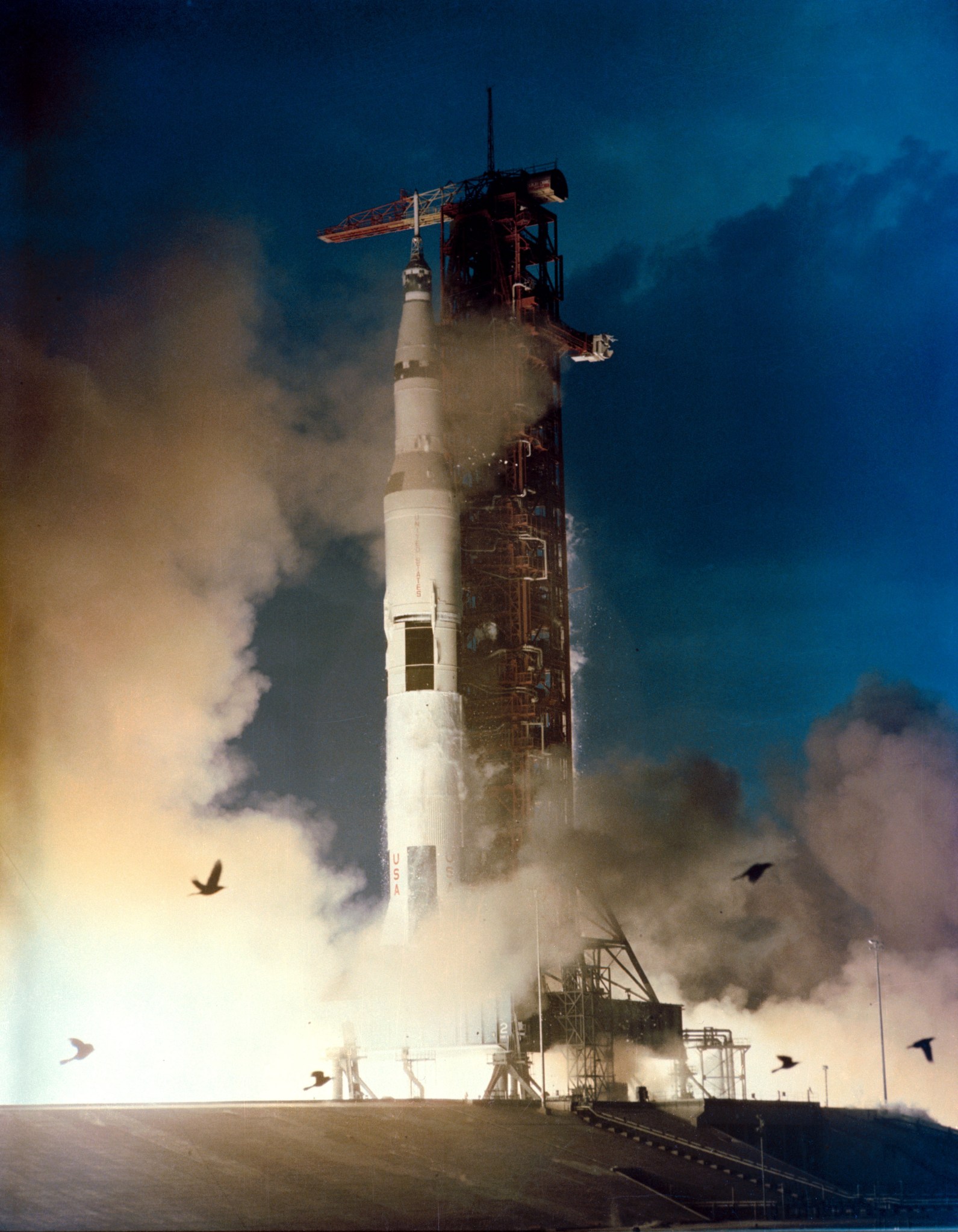
This week in 1971, Apollo 14 Launched from NASA’s Kennedy Space Center carrying astronauts Alan Shepard, Edgar Mitchell, and Stuart Roosa. The primary mission objectives to the Fra Mauro region of the Moon centered on deployment of the Apollo Lunar Surface Experiments Package, lunar field geology investigations; collection of surface material samples for return to Earth; and deployment of scientific instruments not part of the experiments package. Following their successful nine-day mission, the crew splashed down in the Pacific Ocean on Feb. 9, 1971. In a series of special events beginning in July 2019, NASA began marking the 50th anniversary of the Apollo Program — the historic effort that sent the first U.S. astronauts into orbit around the Moon in 1968, and landed a dozen astronauts on the lunar surface between 1969 and 1972. The NASA History Program is responsible for generating, disseminating, and preserving NASA’s remarkable history and providing a comprehensive understanding of the institutional, cultural, social, political, economic, technological, and scientific aspects of NASA’s activities in aeronautics and space. For more pictures like this one and to connect to NASA’s history, visit the Marshall History Program’s webpage. (NASA)



























